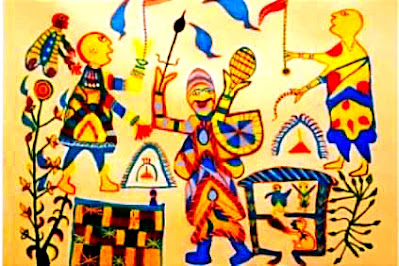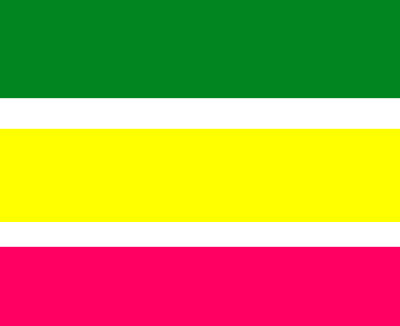PAPER FOLDS FOR THE PLATONIC SOLIDS
Before you start:
1. A suitable weight of paper depends on the size of model that you are making 300g/m² (water colour or coloured pastel paper) gives you a very stout model, but achieving neat creases can be difficult. Probably best is heavyweight cartridge paper (200 or 220 g/m), which makes good models, can be nicely creased, and can be painted. You could even use 160 g/m² (suitable for use in photocopiers) as long as the model is not so large that it becomes flimsy I usually use a paper size no bigger than A3 to draw out the nets- using several sheets where the net is drawn out in multiple parts
2. In addition to your straight edge, pencil and compasses, you will find it useful to have two coloured pencils to distinguish between lines to be cut and lines to be scored and folded. If you do not have coloured pencils, distin guish between the two types of lines by using bold solid lines for the 'cut lines, and broken (dashed) lines for the score and fold' lines (as used here throughout in the instruction sheets).
3. You will also need a scalpel or craft knife, a cutting board, and glue (Uhu General Purpose is good).
4. Draw the construction faintly at first, then strengthen the 'cut' and 'fold' lines when you have completed the whole drawing The finished model looks best if you fold your card so that the score lines as well as the drawn construction are inside, and gives you clean surfaces for decoration.
5. If you are not experienced in scoring, practise first to work out how much pressure is needed for the scored line to fold nicely. Score too deeply and your tabs will fall off! With practice, the back of a scalpel blade works well with thick water colour paper, and the back of an old blunt knife works better on thinner card.
Net for the Tetrahedron (The Platonic Solids of Fire)
04 triangular faces, 04 Vertices, 06 edges, Tetrahedron (2,3-fold) symmetry.
Illustrations of the net drawn out on card and cut out (left), Part assembled (centre) and the model complete (right).
Method:
1. Draw a circle centre O - (judge the position on the sheet, allowing space for top point E).
2. By eye, draw a long horizontal through the centre of the circle parallel to the bottom edge of the sheet.
3. Draw 2 arcs with the same radius from the diameter points A and B to intersect the circle above and below. The intersections above will give you points C and D.
4. To find E: either, use your straight edge to extend AC and BD to cross; or, draw arcs from C and D to cross.
5. Add tabs as shown.
6. Cut out along the solid lines: score along the dashed lines.
7. Fold upwards along the scored lines.
8. Glue carefully (tabs inside) starting with tab marked 1.
9. Clean up and decorate as you wish.
Net for the Cube (The Platonic Solid of Earth)
06 square faces, 08 vertices, 12 edges Octahedral (2, 3, 4-fold) symmetry
Method:
1. Draw a horizontal in the centre of your sheet. Using your compass, mark off four equal measures (points 1, 2, 3, 4 and 5 in Figure above) - with a bit to spare at each end; making sure also that there is room vertically for three measures plus something to spare top and bottom.
2. On points 2 and 3 draw circles with radius the 'measure'.
3. Draw the vertical through the two points where the circles intersect to give the midpoint O, as well as A and B.
4. Draw a circle centre O radius 02. Repeat along the horizontal between points 1 and 2, 3 and 4, 4 and 5.
5. Draw horizontal lines tangenting above and below the four circles.
6. Mark off the corner points of the square about circle O using radius OA from points A and B. Connect the corner points and extend above and below:
7. Setting compass to the original measure, mark off corner points for the rest of the squares required (points C, D, E, E, G, H, J, K, L, M).
8. Add tabs at 45° as shown using diagonals where possible. Judge the width by eye.
9. Cut out along the solid lines score along the dashed lines Fold upwards along the scored lines.
10. Glue carefully and progressively (tabs inside). Clean up and decorate as you wish.
Illustrations of the model partially assembled (abore) and complete (below)












































.jpeg)
.jpeg)
.jpeg)
.jpeg)
.jpeg)
.jpeg)
.jpeg)
.jpeg)
.jpeg)
.jpeg)
.jpeg)
.jpeg)
.jpeg)
.jpeg)
.jpeg)
.jpeg)
.jpeg)
.jpeg)
.jpeg)